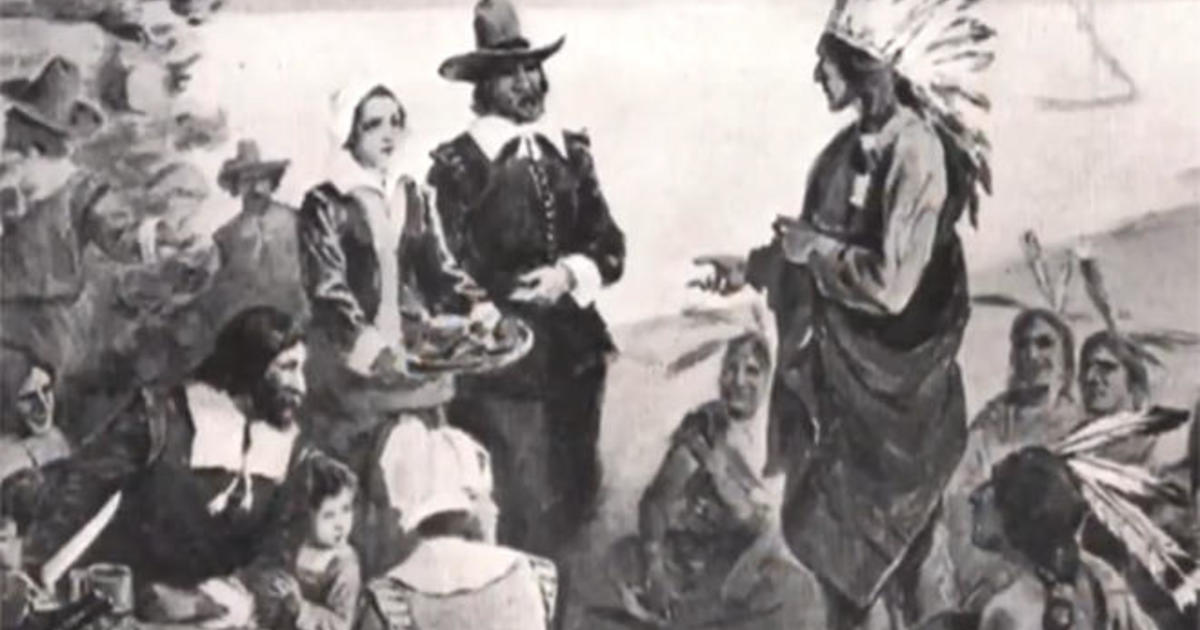
Just a month shy of four centuries ago, a ship carrying the hopes of a new future reached the shores of Plymouth, Massachusetts.
On board the Mayflower II, Plimoth Patuxet Museum‘s chief historian Richard Pickering showed correspondent Nancy Chen the newly-restored reproduction of the ship, which had in its dark hull 102 passengers seeking religious freedom, and a better life.
After a 66-day journey, they arrived in Plymouth in late December 1620, laying the foundation for the beginnings of American democracy.
The Mayflower Compact was the first document to establish representative self-government in Colonial America.
“It certainly shaped the beginnings of our country,” said Michele Pecoraro, the executive director of Plymouth 400, part of a commemoration of the Pilgrims’ legacy, with a collaborator previously missing from past anniversary events.
For the first time indigenous people have been included as partners. “We have Wampanoag board members, we have a Wampanoag advisory committee made up of native people,” said Pecoraro. “So, it is the first real attempt to have a historically accurate and a culturally-inclusive commemoration.”
A member of the Mashpee Wampanoag Tribe, Steve Peters created an exhibit for Plymouth 400 about the Pilgrims’ arrival, called “Our” Story: 400 Years of Wampanoag History.
Chen asked, “Is this something that could have not happened even a generation ago?”
“Yeah, I don’t think this could have happened 20 years ago,” said Peters.
Asked to characterize the events of 400 years ago, Peters said, “It sort of marks the beginning of the end for my people here. It’s important that people understand it so that they can start to be a little bit more humane and compassionate towards our people and the position that we’re in today.”
There are about 3,000 members of the Mashpee Wampanoag Tribe today. The Wampanoag people as a nation had been settled in what’s now Plymouth for as many as 14,000 years.
“We are literally sitting on the land that would have been Patuxet Village in, say, 1614,” Peters said. “They were living, I would like to think, a rather idyllic life.”
That was until a pandemic shortly before the Pilgrims’ arrival killed as many as 90% of the Wampanoag population. The diseases were brought by earlier Europeans. It was known as the “Great Dying.”
Historian Donna Curtin, executive director of Pilgrim Hall Museum, said, “That’s Plymouth’s story – the village of Patuxet entirely wiped out.”
The Wampanoag people suffered heavy losses, making them more receptive to new alliances.
The two groups came together for a feast of gratitude after that fall’s harvest, what we now call Thanksgiving, and lived side-by-side for 50 years, before war greatly devastated the Wampanoag population and way of life.
The story of what happened after is often forgotten in the tale of Thanksgiving.
“Really so much is left out of history,” said Pecoraro. “Just because it’s written down does not mean that it is, a) completely truthful, and b) the only way of expressing it.”
A goal of Plymouth 400 is to tell that more-inclusive history. But because of the pandemic, organizers have postponed many events until 2021, while also turning some exhibits and conferences virtual.
The partnership spans oceans, a four-nation collaboration: England, Holland, America and Wampanoag Homelands.
Mayflower 400 in the U.K. marks the start of the Pilgrims’ journey, as the persecuted Pilgrims set sail from Plymouth, England, before living for 12 years in the present-day Netherlands. Leiden 400 developed a program named after the town where the Pilgrims lived.
All partners are stressing a more inclusive history.
The legacy of the Mayflower endures today. Some 25 million Americans descend from the Pilgrims on board, including at least nine U.S. presidents.
“That’s something that many people can take rightful pride in,” said Curtin. “That’s part of their background, part of their history, part of their own story. But it doesn’t reflect everybody’s story.”
Event organizers are careful to call it a commemoration rather than a celebration. Still, there are Wampanoag members uneasy about the partnership.
This Thanksgiving also marks the 50th anniversary of the National Day of Mourning, when indigenous people gather in Plymouth to honor their ancestors and mourn their continuing struggles.
Peters will start his day there, before feasting that night, like so many other Americans expressing gratitude.
“If you looked at our Thanksgiving dinner, it would look like probably everyone else’s Thanksgiving dinner,” Peters said. “But what you would hear that’s different is what we give thanks for. And so, we give thanks for our ancestors’ ability to persevere in spite of every obstacle that’s been [placed] in front of them over the past 400 years since the European arrival and the colonization of this country. So, that’s what we give thanks for.”

